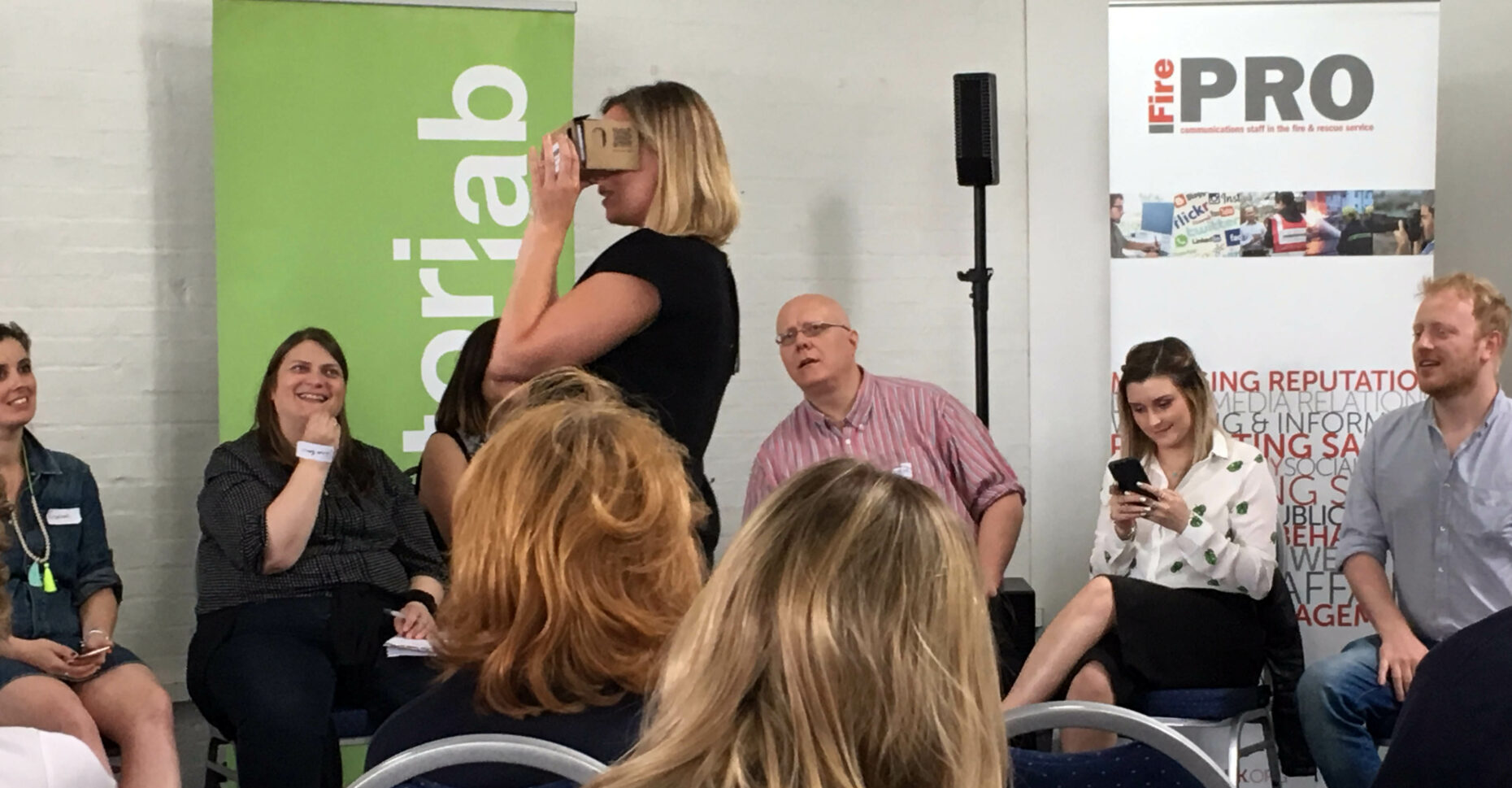I’ve been at the annual summer CommsCamp unconference event in Birmingham today organised by the awesome Dan Slee, Emma Rogers and volunteer team.
The 20-things-I-learned format is a good one, so here goes again:
- The General Data Protection Regulation kicks in from May 2018 and we should all learn more about it: not least because we’ll need to rewrite those wordy T&Cs pages into something people can realistically consent to
- I found this handy summary of the other lawful reasons why an organisation might hold or process personal data where consent isn’t obtained
- The Scottish Government have a nice Individual, Social, Material model for looking at behaviour change, including the barriers which hold people within the organisation back from engaging online
- The Film Cafe team know their video onions, and are generous with their knowledge. You should probably book yourself onto one of their workshops with Comms2Point0
- A classic ‘cutaway’ in film editing is 6 seconds, as that’s apparently the conventional wisdom on how long it takes a viewer to tune into something. (In other news, six second video service Vine is no longer with us…)
- The optimum film length for Facebook is 21 seconds; Instagram 15 seconds; YouTube 3.5 minutes. Bear in mind though that 80% of your viewers will have tuned out/scrolled past after 30 seconds of your film, so put the key info up front rather than building up to it dramatically.
- 360 video and VR is pretty cool (it was fun seeing people experience it for the firs time) and you can make your own with a £150 camera. But it’s not really about gadgetry: it’s about really immersive and powerful experiences, in a world of flicking through feeds. Big implications for charity fundraising, media and public sector comms.
- Check out Purple Planet for royalty-free music for your film soundtracks
- Use lapel mics, rather than directional mics for good video sound. There are options from Rode and Tonor on Amazon for sub £10
- Maybe we’re returning to a new era of silent movies: so many videos on social media are viewed with subtitles on/sound off
- Facebook can auto-subtitle live video now (and lets you correct errors, thankfully)
- One organisation changed all its departments’ Twitter passwords to force them to get in touch with central Comms about purdah… and to identify which accounts which nobody was taking responsibility for in the organisation. Brutal but effective.
- You can be overwhelmed not just with hostility but also with supportive messages during a crisis: during the recent Manchester attack, the Fire Service had to work hard to sift through and subsequently acknowledge the sheer volume of positive feedback and encouragement (we’ll bank that idea for future simulations)
- Encouragingly, the multi-agency Tier 1 flooding exercise we helped support last year in Greater Manchester helped at least one organisation feel better-equipped to handle a real crisis when it hit. That unprompted feedback is great to hear.
- Politicians and political advisors are a growing challenge for emergency comms. The last few months have turned up the pressure on them to respond quickly, show emotion, and make the right strategic decisions. Right now, managing their information requests can be distraction for emergency responders.
- All is not what it seems on Twitter. I’ve followed Kate Starbird’s work on fake accounts for a while, and Andy’s example of copy/pasted statuses is intriguing (and another reason to be sceptical about numbers and automated monitoring)
- Sainsbury’s allegedly shot a fox near one of its stores (there’s a story that begs some questions by itself) and didn’t handle the online backlash well
- Facebook Groups are a challenge for digital engagement: critical to working with local/subject matter groups, don’t get picked up by monitoring tools, but hard to participate in as a professional without overwhelming your personal feed or seriously blurring the boundary between work and home. For ref, here’s the golden oldie case study I mentioned from Al Smith on turning a hostile Facebook group into a positive crowd
- Christian from the Scottish Govt bakes a mean brownie.
- And on that topic: you can eat your bodyweight in cake from the bake sale stall (thanks Kate Bentham!) and still walk away empty handed in terms of the charity shop tat raffle. Next year… *shakes fist at sky*
I had an exchange with Esko from Satori Lab about to what extent public sector comms people can really be expected to start adopting networked behaviours when so much of the world around them, from unions, to leadership, to the press office model, is so hierarchical and naturally adversarial.
But on reflection I think I was wrong – or at least, not ambitious enough.
It’s clearly good to do classic corporate comms better with more engaging video, faster crisis comms and better co-ordination of Twitter accounts. But there’s a bigger opportunity for the individuals working in organisations to properly work with each other and with citizens through digital tools. It’s the kind of community engagement I’ve been blogging about here for almost a decade, that takes courage and passion. Depressingly, that kind of digital comms is still rare and some are still being burnt as heretics in their organisations.
CommsCamp, OneTeamGov, UKGovcamp and events like it are about reinforcing the network and building our collective confidence to agitate for change, not simply to accept the status quo and our place in it.
Because if not us, then who?
